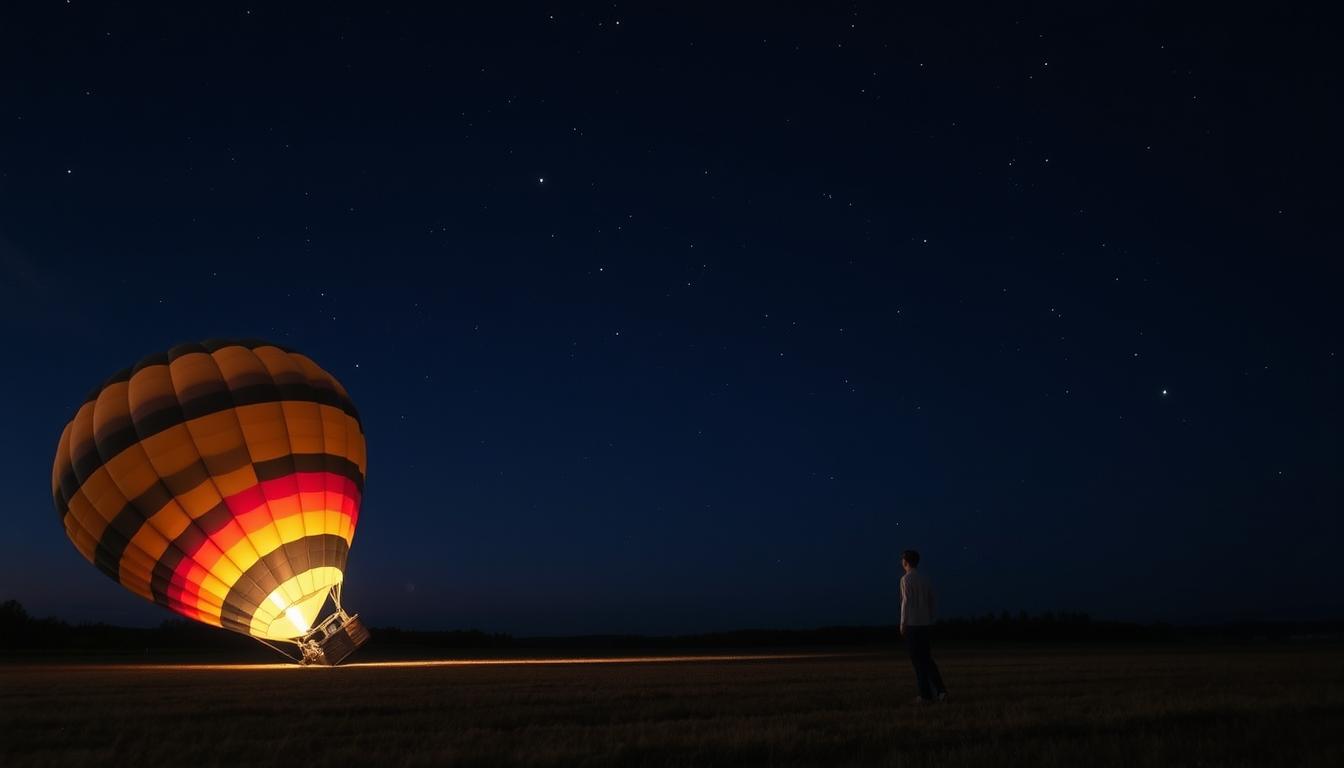
Why don t hot air balloons fly at night?
Picture flying high with a breathtaking view, in the calm of a hot air balloon. As it gets dark, with the sunset bringing beautiful colors, you might ask, “Why don’t hot air balloons fly at night?” The enchanting experience fades with the night, making safety the main focus.
Ensuring everyone on the balloon ride is safe is crucial. In the dark, steering a hot air balloon becomes tough. This is why there are rules against flying them at night. It helps keep the peaceful feeling we love during the day. Let’s look into why these rules exist and why staying safe matters so much in ballooning.
Key Takeaways
- Nighttime hot air balloon flights present significant visibility challenges.
- Safety regulations heavily influence flying conditions in balloons.
- Visual cues from the landscape are essential for navigation.
- Hot air balloon safety prioritizes the well-being of all participants.
- Nighttime restrictions help prevent potential collision risks.
Understanding Hot Air Balloon Safety
Hot air balloon safety needs a good grasp of visibility and how to navigate. Pilots must clearly see to avoid dangers and know where they are. At night, it’s harder to spot landmarks due to the lack of natural light.
Importance of Visibility in Hot Air Balloon Navigation
Daylight flights help pilots see where they’re going by spotting landmarks. This makes it easier to avoid bumping into things. But flying at night is tougher because usual signposts disappear, making pilots rely more on their instruments. This can make night flying less safe.
Potential Risks of Nighttime Hot Air Balloon Flights
Night flights in hot air balloons can be risky due to poor visibility. Accidents become more likely, endangering everyone on board. Hitting objects or wandering into restricted air spaces are serious dangers. That’s why rules limit when hot air balloons can fly, to ensure better visibility.
Why don’t hot air balloons fly at night?
Hot air balloon flights must follow strict safety rules. These rules help pilots ensure everyone’s safety during the flight. They highlight the best flying conditions and explain safe operation limits for hot air balloons.
Hot Air Balloon Regulations and Guidelines
In many places, like the United Arab Emirates, flying at night is not allowed. This rule helps keep flying safe and ensures pilots can see well. Balloons have to land before it gets dark to keep everyone safe. Following these rules makes sure flying in a balloon is both thrilling and safe during the day.
Weather Considerations for Evening Flights
Nighttime weather can make flying risky. Changes in temperature, wind, and visibility at night are big concerns. These issues show why balloons should not fly after dusk. Pilots can’t navigate well without light, and it’s less fun for passengers. Knowing about weather and balloon rules helps plan safe flight times.
Conclusion
There are a few reasons why hot air balloons usually don’t fly at night. The main issue is that it’s hard to see in the dark, making it tough to navigate. Also, flying at night comes with big risks. Keeping everyone safe is the top priority, and certain rules help make sure of that.
Laws are in place to make sure everyone follows safety steps closely. By flying during the day, you get to see amazing views safely. This way, you can have a great time without worrying.
If you want to try flying in a hot air balloon, talk to experts who know all about it. For an amazing trip over the desert, you can call Safari Desert Dubai at +971 52 447 2716 or send an email.
FAQ
Why don’t hot air balloons fly at night?
Hot air balloons avoid flying at night due to safety issues and rules. Not being able to see well makes it hard to steer, as pilots use the view of the ground to help them. Also, rules typically stop balloons from flying at night to avoid crashes and other dangers.
What are the safety considerations for hot air balloon flights?
For balloon flights, safety is key. Being able to see where you’re going is important for a safe flight. Pilots look for landmarks during the day to guide them. Because these clues are missing at night, it’s riskier and there are strong rules against flying after dark.
What are the potential risks of nighttime hot air balloon flights?
Flying balloons at night comes with dangers like poor visibility. This can make it hard to avoid other objects in the sky or unsafe areas. The chance of bad weather also goes up at night, which can make flying safely harder.
What regulations govern hot air balloon flights?
Laws make sure hot air balloon flights are safe for everyone. Night flights are often not allowed to keep flying safe. For example, in the United Arab Emirates, the GCAA has rules to stop balloons from flying after the sun goes down.
How do weather conditions affect hot air balloon flights?
Weather hugely affects balloon flying. Pilots must watch wind, temperature, and how well they can see to stay safe. Flying at night can be extra tricky because the weather can change fast, making sticking to day flights a must.


